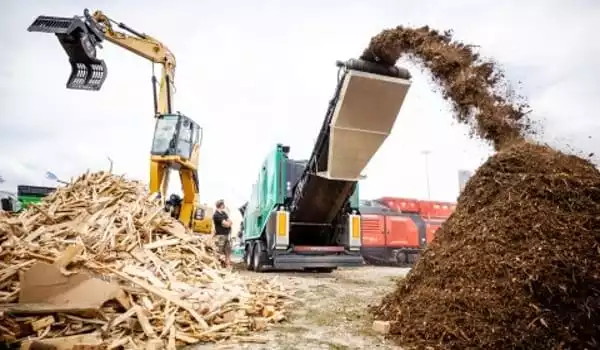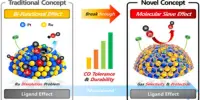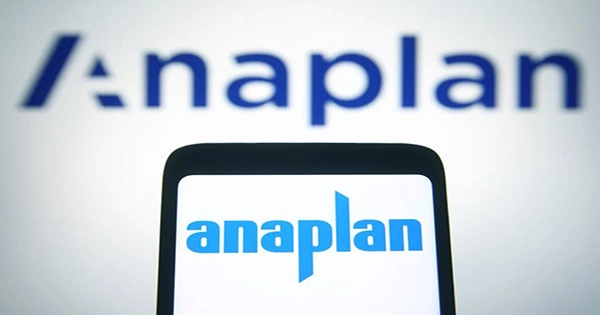Firewood, charcoal, chips, sheets, pellets, and sawdust are all examples of wood fuel. The specific form employed is determined by criteria such as source, quantity, quality, and application. According to the Intergovernmental Panel on Climate Change’s most recent assessment report, a significant reduction in CO2 emissions is essential to limit the effects of climate change. One option to reduce carbon emissions from transportation would be to produce fuel from renewable sources such as waste wood and straw or renewable electricity.
Ethanol is typically created by fermenting sugars derived from starchy raw materials such as corn or lignocellulosic biomass such as wood or straw. It is a well-established fuel that decarbonizes the transportation industry and can serve as a foundation for long-term CO2 emission reductions. Researchers at the Straubing Campus for Biotechnology and Sustainability of the Technical University of Munich (TUM) have developed a new process for producing ethanol in partnership with the Lappeenranta-Lahti University of Technology (LUT) in Finland.
Offcut materials from the forestry industry are combined with hydrogen in this context. The hydrogen is created by separating water into hydrogen and oxygen using electricity – in other words, by using water electrolysis. This will allow extra electricity to be used to produce ethanol in the future.
The overall process is primarily made up of technically developed sub-processes. However, the process steps’ composition and the last step — hydrogenation of acetic acid to make ethanol — are novel.
Daniel Klüh
“The overall process is primarily made up of technically developed sub-processes. However, the process steps’ composition and the last step — hydrogenation of acetic acid to make ethanol — are novel” explains Daniel Klüh, a doctorate student at TUM Straubing Campus’ Professorship of Renewable Energy Systems.
The costs of ethanol with the new production method are competitive
The economic feasibility has also been analyzed by the researchers. “The values we computed are based on raw material and energy assumptions. We make no use of current market prices. Our prices for chemical system components are calculated using the year 2020 as the basis “Klüh says. In the modeling, the lowest cost for ethanol was 0.65 euros per liter, with biomass prices of 20 euros per megawatt hour, energy costs of 45 euros per megawatt hour, and an annual production volume of around 42 kilotons of ethanol.

“The current lignocellulosic ethanol production options are thus cost competitive. The price of ethanol is highly sensitive to the cost of electricity and ranges between 0.56 and 0.74 euros per liter “explains Assistant Professor Kristian Melin of LUT in Finland. One reason for the high profitability is that the ethanol yield is much higher than in traditional fermentation-based bioethanol processes from straw or wood. The traditional process produces only 200 to 300 liters of ethanol per dry ton of biomass, whereas this process produces 1350 to 1410 liters.
Where production facilities could be located
Part of the research focuses on the flexible geographical positioning of manufacturing plants, which would allow for some independence from suppliers. “Countries with a strong potential for waste wood and green power, such as Finland or even Canada, can act as producers of acetic acid, which is then hydrogenated to make ethanol in the final process step,” says LUT Prof. Tuomas Koiranen.
“In the future, countries like Germany will hopefully have a green electricity mix and will be able to carry out the hydrogenation of acetic acid to ethanol at a domestic level. However, Germany does not have the waste wood potential for a large-scale biomass gasification which is required for the synthesis of acetic acid,” adds Prof. Matthias Gaderer, Professor of Renewable Energy Systems at TUM.
The technology needs to mature further
With the use of green electricity to power the electrolysis, this technique can create a low CO2 fuel with a greenhouse gas reduction potential of 75% when compared to a fossil fuel such as gasoline. Ethanol is well-established as a fuel. It can be used in the form of E-10 gasoline, which already contains 10% ethanol in the fuel mixture for conventional autos, or as ED95, which contains 95% ethanol, as a diesel substitute for heavy goods transportation.
The scientists’ process simulation demonstrated the process’s competitiveness. “To market this product, the level of technological maturity must be improved further. The next steps could entail further catalyst developments, a reactor design and the construction and operation of a pilot system,” says Prof. Gaderer.















